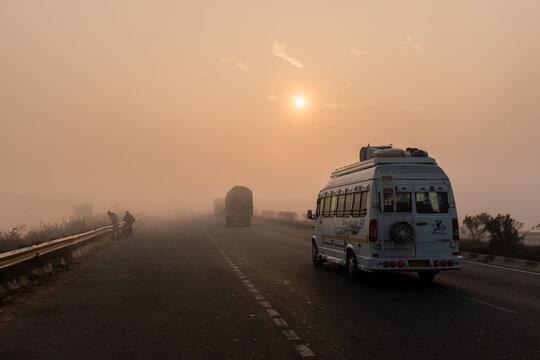
10-Dec-2022
Why do Indian roads have a lot of dust
There are a number of reasons why Indian roads have a lot of dust. First, India is a very populous country, and with that comes a lot of traffic. Second, many Indian roads are not paved, which means that there is more opportunity for dust to accumulate.
- Finally, India is a very dry country, so there is less moisture to help keep the dust down. While the dust on Indian roads may be annoying, it is not necessarily a bad thing. In fact, many experts believe that the dust may actually be beneficial to the environment.
- The dust helps to trap heat and prevent it from escaping into the atmosphere, which can help to combat climate change. If you are concerned about the dust on Indian roads, there are a few things you can do to help reduce it.
- One option is to use public transportation instead of driving. You can also try to avoid driving on unpaved roads. Finally, you can help to plant trees and vegetation, which can help to hold the dust in place and prevent it from being blown around so much.
The Indian climate
The Indian climate is quite hot and dry, which causes the roads to be covered in a layer of dust. This dust can get into people's lungs and cause respiratory problems. It can also make it difficult to drive on the roads, as the tires can slip on the dust.
The Indian landscape
- The Indian landscape is vast and varied, with arid deserts, snow-capped mountains, and everything in between. This diversity means that the country's roads are subject to a range of conditions, from searing heat to frigid cold. And while India's climate can be tough on roads, the country's terrain is also to blame for the amount of dust that collects on them.
- India is home to some of the world's most extreme landscapes, which can take a toll on even the sturdiest of roads. The desert regions in particular are notoriously hard on pavement, with temperatures reaching up to 50 degrees Celsius (122 degrees Fahrenheit) during the day and plunging below freezing at night. The constant fluctuation in temperature wreaks havoc on asphalt, causing it to crack and crumble.
- And then there's the dust. India is a dusty country, with much of its land covered in fine sand or dirt. This not only makes for dirty roads, but also makes it difficult for road crews to keep them clear. In fact, it's not uncommon for Indian roads to be completely covered in dust during dry season. While this might not seem like a big deal, all that dust can actually cause serious health problems if inhaled.
Poorly maintained roads
Poorly maintained roads are one of the main reasons why Indian roads have a lot of dust. The condition of the roads is often poor, with potholes and bumps being common. This makes it difficult for vehicles to travel on them, and also contributes to the build-up of dust on the roads. In addition, many Indian roads are not regularly cleaned, which also contributes to the problem.
Lack of trees
As per a 2011 report by the Indian Space Research Organisation, 21.23% of India’s total land area is covered by forests. This means that almost one-fifth of India is forested. But, this number was as high as 33% in 1947. So, why have almost 10% of India’s forests disappeared in the last 60 years? The main reason for the loss of forests is due to the conversion of forestland to other uses such as agriculture, urbanisation and industrialisation. According to a report by the World Bank, an estimated 1.5 million hectares of forestland is lost each year, which is equivalent to the size of Luxembourg!
- Loss of forests has led to a decrease in tree cover, which in turn has resulted in a lot of dust on Indian roads. With fewer trees to hold the soil together, there is more dust that gets kicked up when vehicles move on the roads. Additionally, trees also help to trap pollution particles and dust from the air, but with fewer trees present, there is less filtering happening and more dust in the air overall.
- So what can be done about this problem? One solution is increased afforestation and reforestation efforts so that tree cover can be increased and eventually lead to less dusty roads. Individual citizens can also do their part by planting trees themselves and taking care of them so that they grow into healthy adults. Another way to reduce road dust is by sprinkling water on roads regularly
Conclusion
In conclusion, it can be said that the Indian roads have a lot of dust because of the many vehicles that ply on them and also because of the dry climate in most parts of India. This dust not only causes respiratory problems for people but also leads to road accidents. Hence, it is important for the government to take measures to control the level of dust on Indian roads.

SEO and Content Writer
I am Drishan vig. I used to write blogs, articles, and stories in a way that entices the audience. I assure you that consistency, style, and tone must be met while writing the content. Working with the clients like bfc, varthana, ITC hotels, indusind, mumpa, mollydolly etc. has made me realized that writing content is not enough but doing seo is the first thing for it.
Join Our Newsletter
Subscribe to our newsletter to receive emails about new views posts, releases and updates.
Copyright 2010 - 2026 MindStick Software Pvt. Ltd. All Rights Reserved Privacy Policy | Terms & Conditions | Cookie Policy